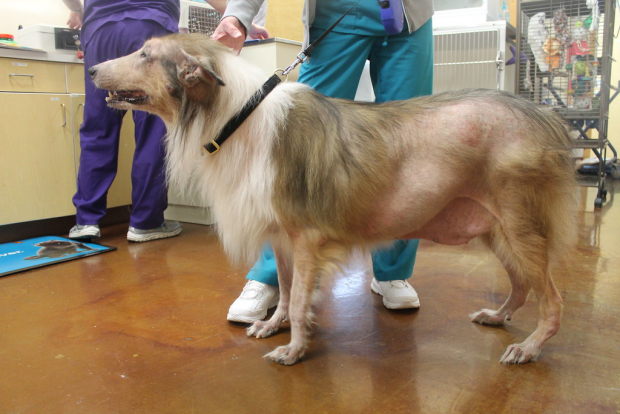What Causes Hair Loss in Dogs? Here is the Answer
Dogs are not merely pets. But to many owners, they are family members. They are given the kind of care that even some people cannot afford. That is how precious our little buddy is. Our dog is the best among the bestest friend we have that we even share our bed with him.
But spending the days with him is not always sunny. Like us, sometimes they feel sick and one indication is hair loss. Hair loss in dogs is due to different health conditions. It is necessary to know the underlying cause so you can treat little Dinky properly.
Most dogs shed more than the others, that's why it is important to determine if it is just a simple shedding or if it is something serious. If your dog lose clumps of fur then it is definitely serious. Eventually, you will see bald patches because of excessive hair loss. If this happens, put on his best no pull dog harness and take him to the vet.
1. Infestation.
Mites, fleas, lice and worms are common examples of infestation. All these cause itchiness that will result to frequent scratching. If your dog scratches and licks every now and then it will cause bald patches. Usually you will notice red spots in the bald area which are probably bites from fleas or skin allergy.
2. Skin problems or allergies.
If it is skin allergy, other skin conditions are also present. Other than the red spots or rashes, there might also be skin swelling and small, puss-filled bumps or abscess. One example is impetigo which can be treated at home. Other skin allergies that cause baldness are yeast infection, allergic dermatitis and folliculitis.
Eczema and dandruff are also causes of hair loss. These are commonly treated with a medicated shampoo from your vet. There are hundreds of skin allergies in dogs. It's very difficult to recognize each in the naked eye of an unprofessional, as most of them look similar. For example, you might incorrectly identify a ring worm as a simple hotspot. This will lead you to the wrong treatment that could worsen it.
Other skin allergies are interrelated in such a way that one allergy is the result of the other. Hence, consulting your vet is the best thing to do first.
3. Alopecia
Affects endocrine, lymphatic and immune system. Affects dogs and cats of all ages, breed and gender. Extremely noticeable, characterized by symmetrical hair loss. Bald circles appear with crusting and inflammation of the skin. This occurs from demodectic mange accompanied by growth disruption of hair follicles. Infection, endocrine abnormalities, immune disease and trauma cause the hair follicles to swell that makes their hair fall excessively.
4. Nutritional deficiencies
A very common source of hair loss in dogs is lack of nutrients. It is important that your dog is getting the right amount of vitamins and minerals to support their immune system. Proper nutrition intake shows in healthy and shiny hair of your pet.
On the contrary, the quality of your dog's hair decreases gradually if his nutrition intake is insufficient. Your dog's hair will eventually become dull and brittle that will lead to hair loss if untreated. What is even worse is the declining level of the immune system that exposes your pooch to various diseases.
5. Cushing's disease
Cushing's disease is also known as hyperadrenocorticism. This is a condition when your dog's body overproduces cortisol. Cortisol is a steroid hormone produced by the adrenal gland. This hormone helps the dogs' bodies to function properly. When the adrenal gland receives a message from the pituitary gland, it releases cortisol. The cushing's disease is due to the growth of one of these glands that produces too much cortisol. This hormonal imbalance leads to hair loss and other symptoms.
6. Hypothyroidism
Hypothyroidism is another hormonal imbalance as the thyroid gland in dogs produce too little amount of thyroxine. Thyroxine is a hormone needed to manage the dog's metabolism. Metabolism is when food turns into energy. Therefore if there's not enough thyroxine to control it, your pooch will gain weight. This is because the food he eats is not converted to energy he can use.
Aside from that, too much hair loss is another visible symptom. Hair loss due to hypothyroidism usually occurs on your dog's tail, back of rear legs and trunk. You will also notice some black patches accompanied by flaky skin.
These are just the common causes of hair loss in dogs. Other conditions may also be a source of hair loss such as blood infection and other serious diseases. Keep in mind that whatever it is that causes your dog's hair loss should be treated immediately before it becomes malignant. A simple disease can also take the lives of our precious pets. So it is advisable to consult your veterinarian as soon as you notice there's something wrong with them.
See Now: NASA's Juno Spacecraft's Rendezvous With Jupiter's Mammoth Cyclone
* This is a contributed article and this content does not necessarily represent the views of scienceworldreport.com





Join the Conversation